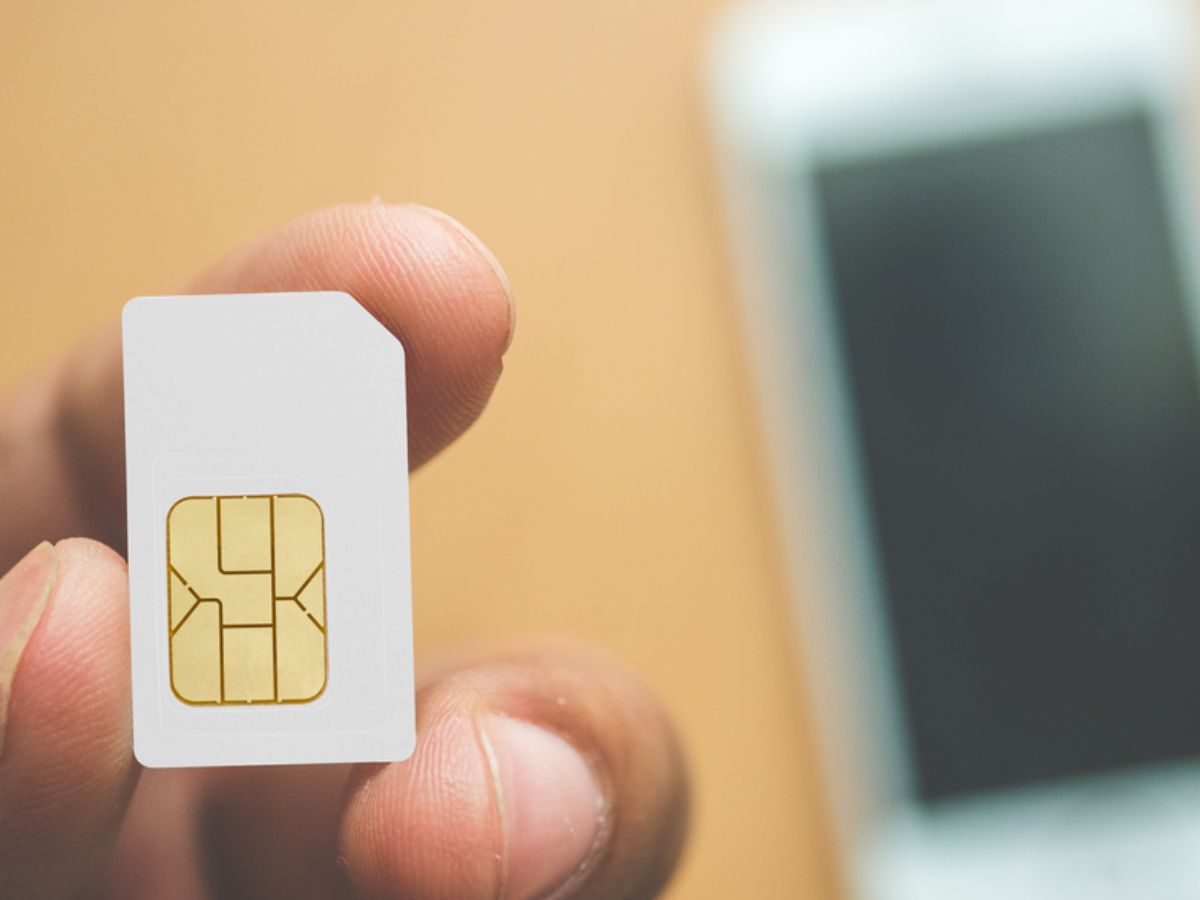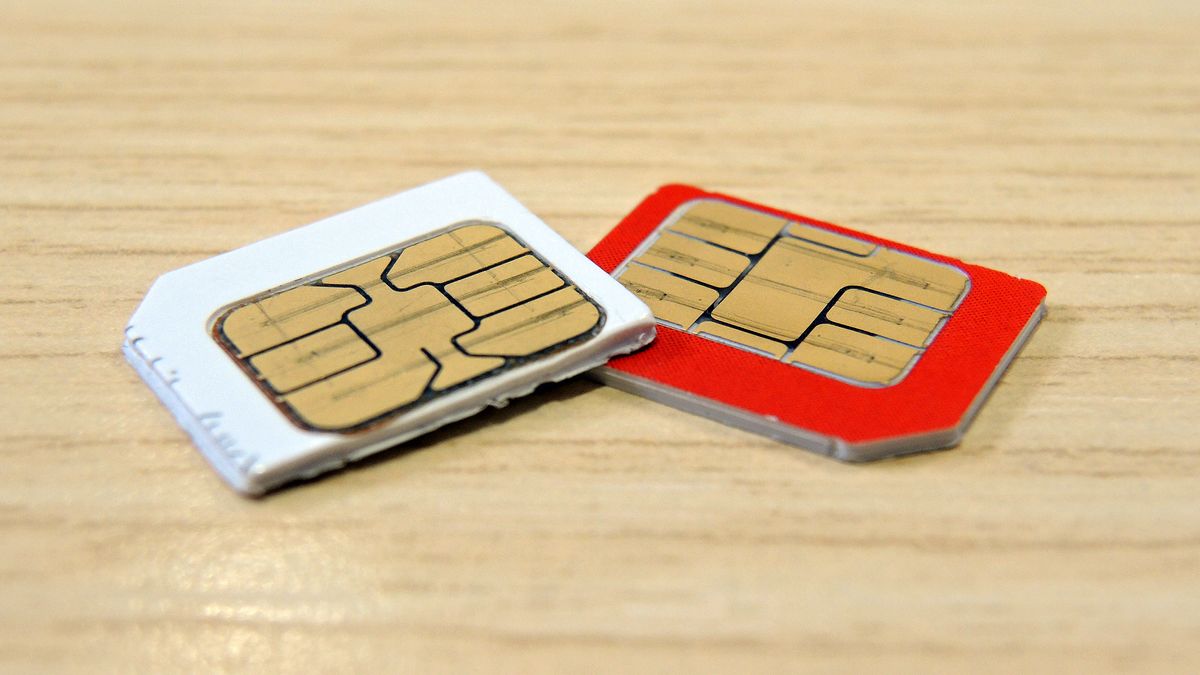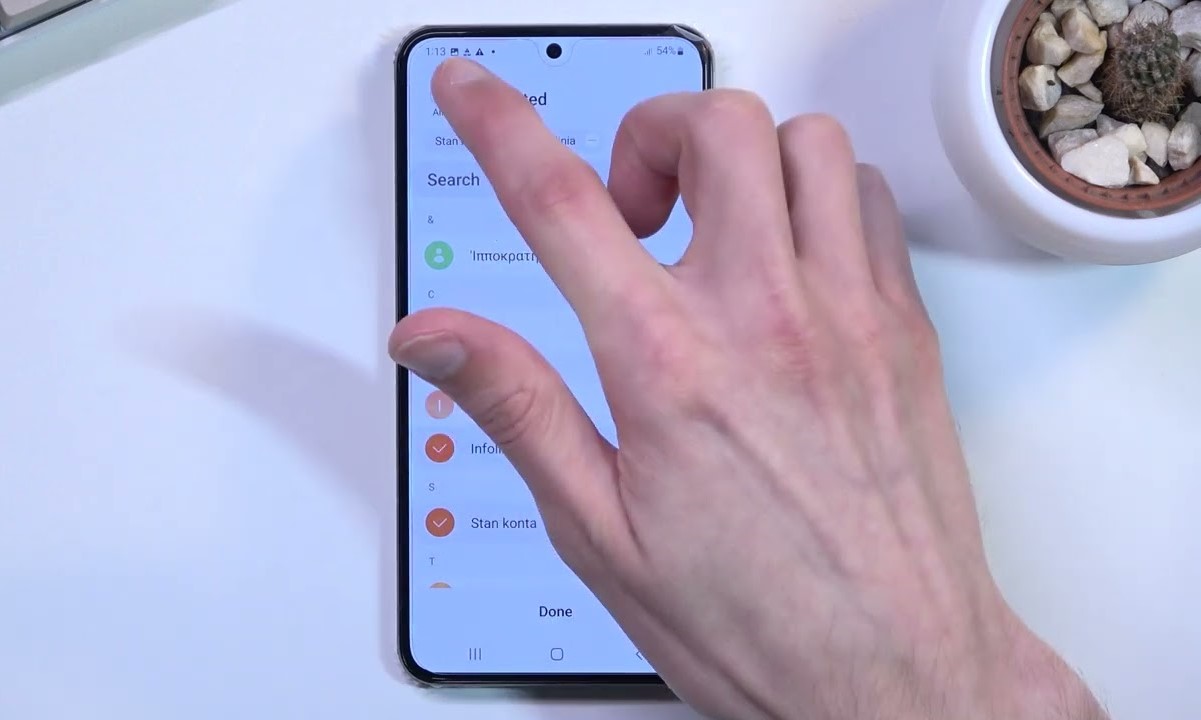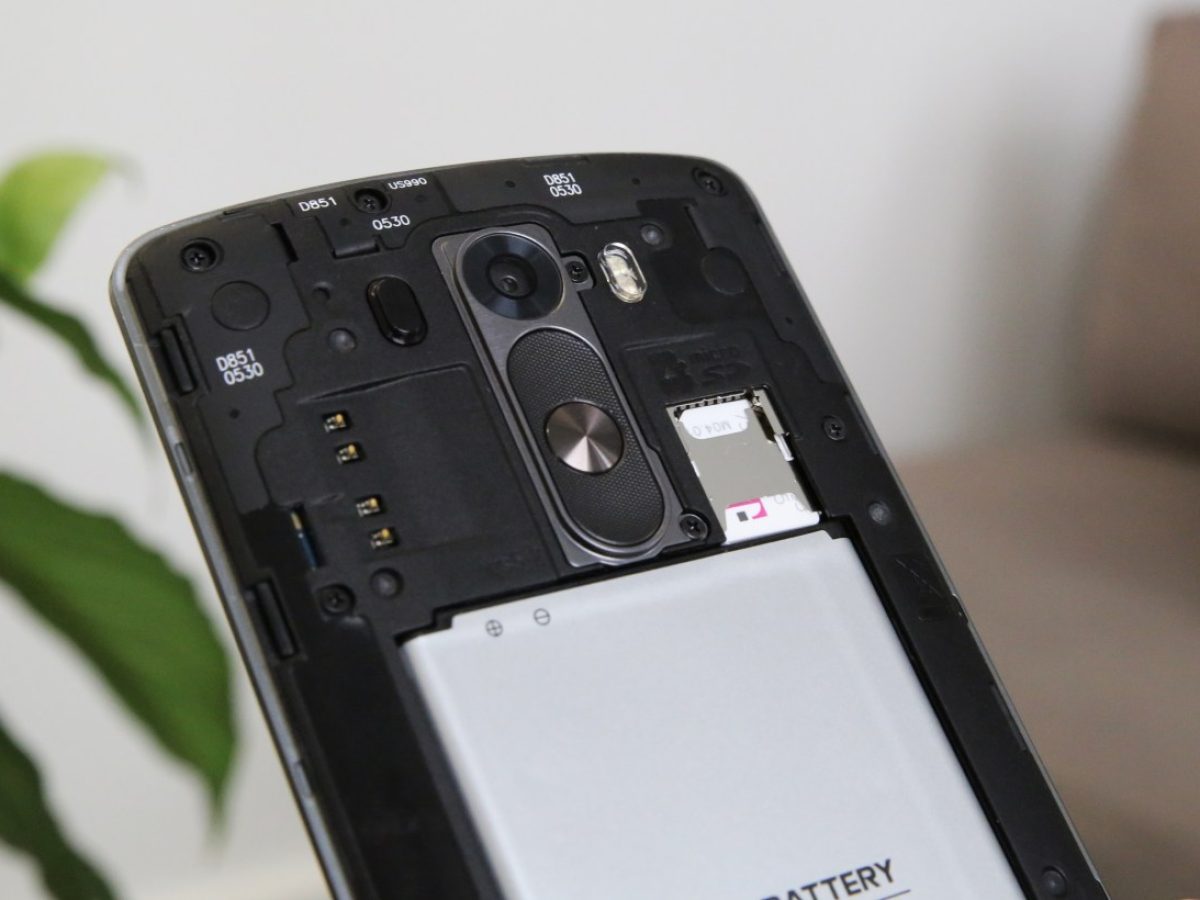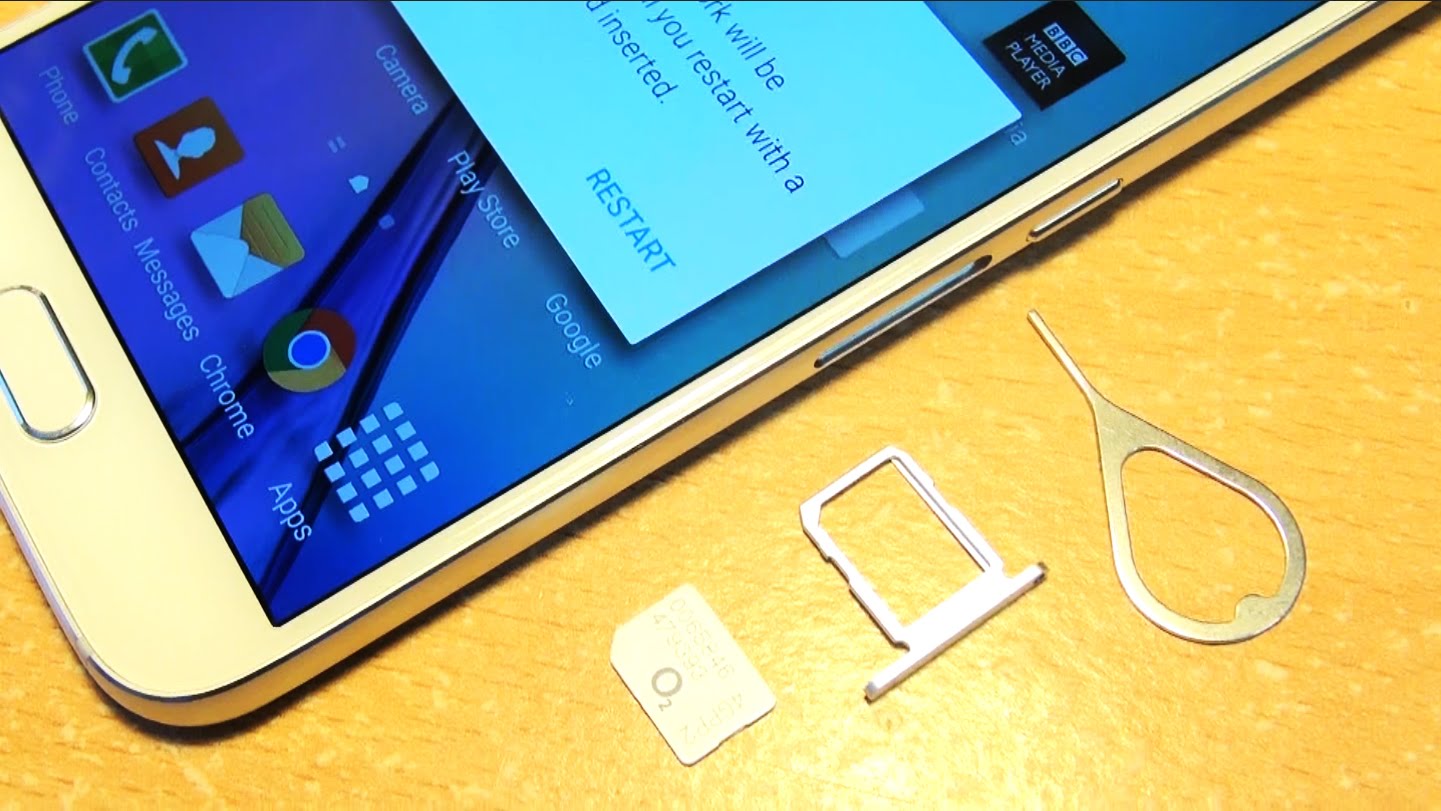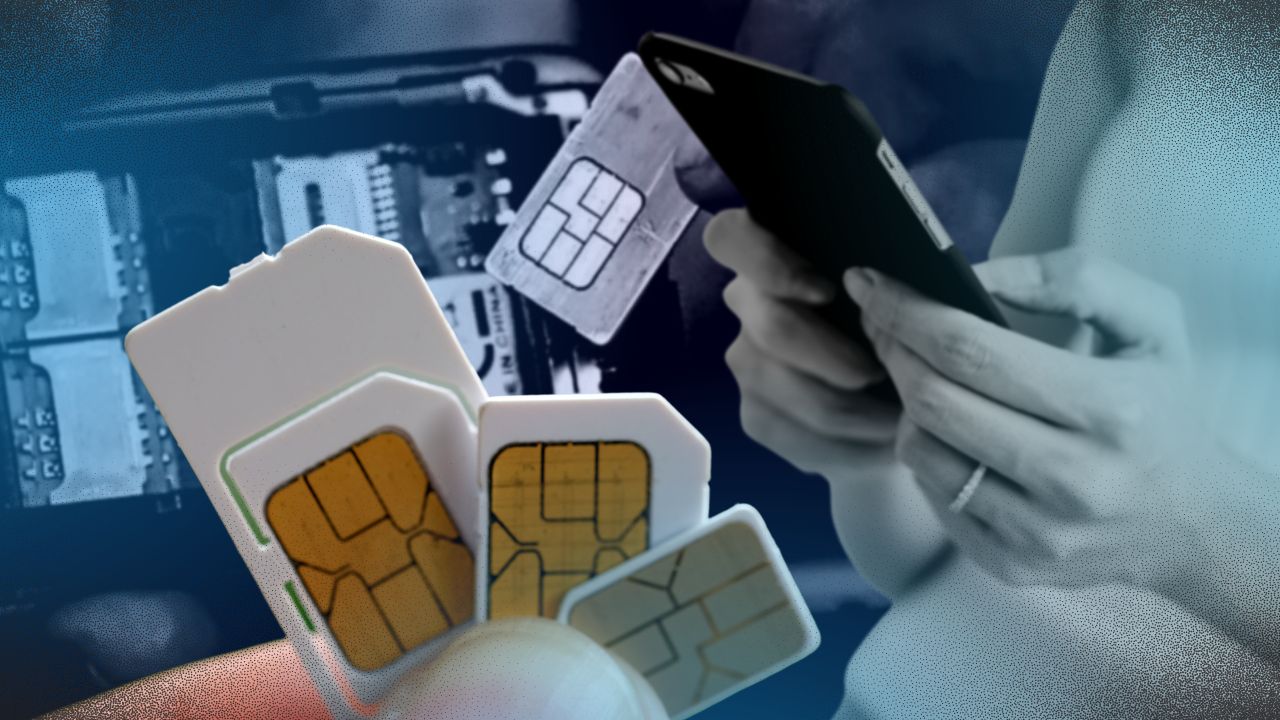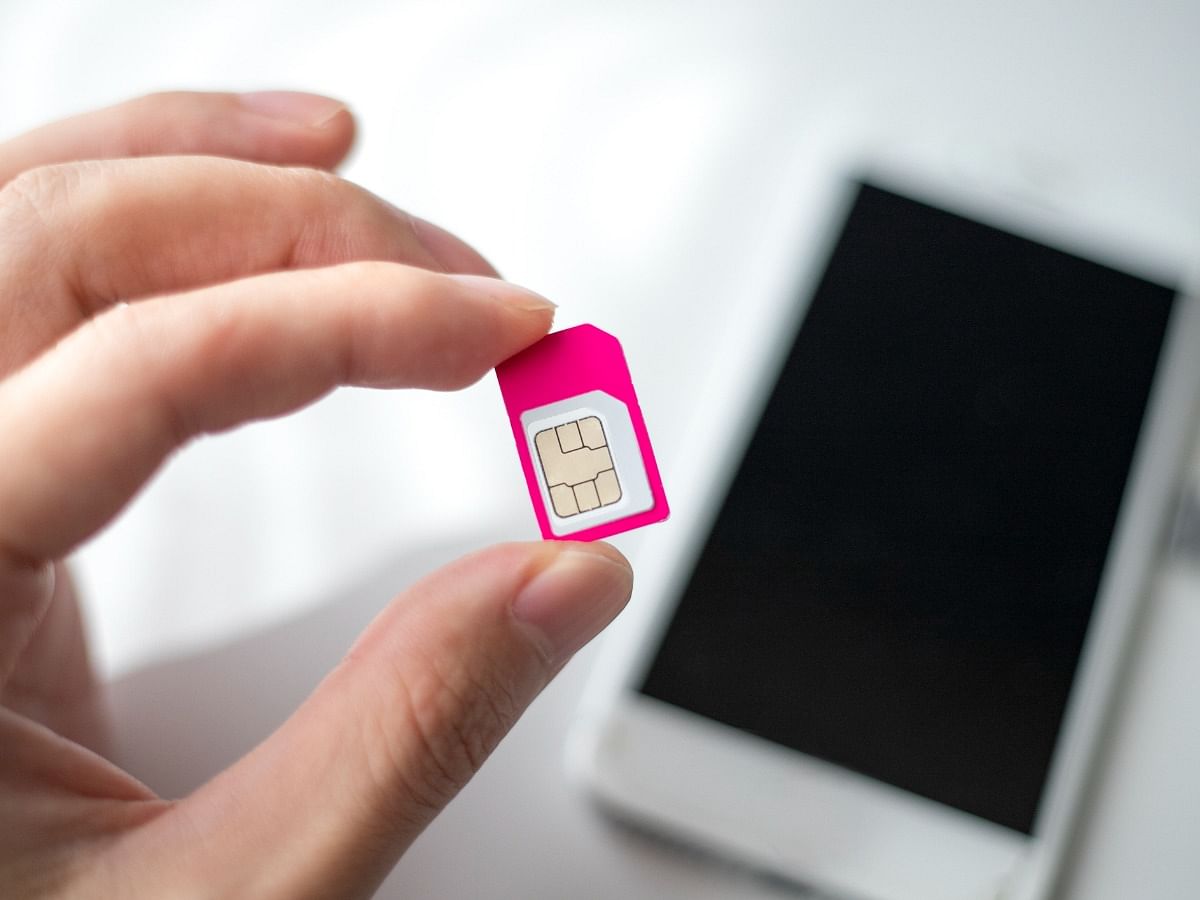Introduction
In this digital age, our mobile devices have become an extension of ourselves, holding a treasure trove of personal and professional data. From contact information to text messages and call logs, our SIM cards store a wealth of valuable data that we simply cannot afford to lose. This is where the importance of backing up SIM card data comes into play.
As we rely heavily on our mobile devices for communication, entertainment, and productivity, the thought of losing all our SIM card data can be daunting. Whether it's due to a device malfunction, loss, or theft, the repercussions of not having a backup can be significant. Therefore, understanding the various methods of backing up SIM card data and implementing a suitable backup strategy is crucial in safeguarding our digital lives.
In this comprehensive guide, we will explore the significance of backing up SIM card data and delve into various methods for doing so. From utilizing a SIM card reader to leveraging cloud services and backup apps, we will cover the spectrum of options available to ensure the safety and accessibility of your SIM card data.
By the end of this guide, you will not only appreciate the importance of backing up your SIM card data but also be equipped with the knowledge and tools to effectively safeguard this invaluable information. So, let's embark on this journey to discover the best practices for backing up SIM card data and securing your digital identity.
Why Backing Up SIM Card Data is Important
Backing up SIM card data is a crucial practice that often goes overlooked in the realm of digital security. Our SIM cards store a myriad of essential information, including contact details, text messages, and call logs, all of which hold immense personal and professional value. The significance of backing up SIM card data becomes evident when we consider the potential risks associated with not having a backup in place.
First and foremost, mobile devices are susceptible to various forms of damage or loss. Whether it's a hardware malfunction, accidental damage, or theft, the loss of a device can result in the irrevocable disappearance of all SIM card data. Without a backup, this could mean losing years' worth of contacts, important messages, and call histories, disrupting both personal and professional communication channels.
Moreover, in the event of a device upgrade or replacement, transferring SIM card data to a new device becomes seamless and stress-free when a backup is readily available. This ensures that the transition to a new device is smooth and that all essential data is retained without any hassle.
Furthermore, the prevalence of cyber threats and malware makes digital data vulnerable to unauthorized access or corruption. By regularly backing up SIM card data, individuals can mitigate the risks associated with data breaches, ensuring that their information remains secure and accessible even in the face of unforeseen security incidents.
Additionally, the sentimental value of certain data stored on a SIM card cannot be overlooked. From cherished text message conversations to important contact details, losing such data due to unforeseen circumstances can be emotionally distressing. Therefore, having a backup in place provides peace of mind, knowing that precious memories and essential information are safeguarded against unexpected loss.
In essence, backing up SIM card data is not merely a precautionary measure; it is a proactive approach to safeguarding one's digital identity and maintaining seamless communication channels. By recognizing the importance of backing up SIM card data, individuals can ensure the preservation and accessibility of their valuable information, thereby fortifying their digital resilience in an ever-evolving technological landscape.
Methods for Backing Up SIM Card Data
When it comes to safeguarding the data stored on your SIM card, employing effective backup methods is essential. Fortunately, there are several approaches to backing up SIM card data, each offering its unique advantages and suitability based on individual preferences and requirements.
Using a SIM Card Reader
A SIM card reader is a convenient and straightforward tool for extracting and backing up data from your SIM card. By connecting the reader to a computer or mobile device, you can easily access the information stored on the SIM card and create a backup. This method is particularly useful for individuals who prefer having direct control over the backup process and maintaining a physical copy of their SIM card data. Additionally, SIM card readers are often compact and portable, making them an ideal solution for on-the-go data backup needs.
Using a Cloud Service
Leveraging a cloud service for backing up SIM card data offers unparalleled convenience and accessibility. By syncing your SIM card data with a cloud storage platform, such as Google Drive, iCloud, or Dropbox, you can ensure that your information is securely stored in a remote location. This not only safeguards your data from device-related risks but also enables seamless access from any internet-connected device. Cloud backup solutions provide a layer of redundancy, ensuring that your SIM card data remains safe and recoverable even in the event of device loss or damage.
Using a Backup App
There are numerous mobile applications designed specifically for backing up SIM card data. These apps offer user-friendly interfaces and automated backup processes, simplifying the task of preserving your SIM card information. With features such as scheduled backups and selective data restoration, backup apps provide a tailored approach to managing and securing your SIM card data. Additionally, many of these apps offer encryption and password protection, enhancing the security of your backed-up data.
By exploring these diverse methods for backing up SIM card data, individuals can select the approach that aligns with their preferences and technological proficiency. Whether opting for the direct connectivity of a SIM card reader, the accessibility of a cloud service, or the user-friendly interface of a backup app, the goal remains consistent: safeguarding the invaluable data stored on your SIM card.
Each method offers its distinct advantages, empowering users to proactively protect their digital identities and ensure the availability of their SIM card data when needed. In the dynamic landscape of digital technology, embracing effective backup methods is paramount, enabling individuals to navigate potential data loss scenarios with confidence and resilience.
Using a SIM Card Reader
A SIM card reader serves as a valuable tool for individuals seeking direct control over their SIM card data backup process. This compact and portable device allows users to extract and store information from their SIM card onto a computer or mobile device with ease. By connecting the SIM card reader to a compatible device, users can access and manage the data stored on their SIM card, offering a convenient solution for safeguarding valuable information.
The process of using a SIM card reader typically involves inserting the SIM card into the designated slot on the reader, which is then connected to a computer or mobile device via USB or other compatible interfaces. Once connected, the user can access the SIM card data and initiate the backup process through specialized software provided with the reader or compatible third-party applications.
One of the key advantages of using a SIM card reader is the ability to maintain a physical copy of the backed-up data. This can be particularly beneficial for individuals who prefer having tangible backups of their essential information, offering an additional layer of security and accessibility. Furthermore, the portability of SIM card readers enables users to perform backups on-the-go, making it a practical solution for those with dynamic data management needs.
Additionally, SIM card readers often provide a straightforward and user-friendly interface, ensuring that individuals with varying levels of technological proficiency can navigate the backup process with ease. This accessibility makes SIM card readers an inclusive solution for individuals who prioritize simplicity and control when it comes to managing their SIM card data.
In essence, utilizing a SIM card reader for backing up SIM card data empowers users to take a proactive approach to data security and accessibility. By leveraging this method, individuals can maintain direct control over their backup process, ensuring that their valuable SIM card data remains readily available and protected from potential risks and data loss scenarios.
Using a Cloud Service
Leveraging a cloud service for backing up SIM card data offers unparalleled convenience and accessibility. Cloud storage platforms, such as Google Drive, iCloud, or Dropbox, provide a seamless and secure solution for preserving essential data stored on SIM cards. The process typically involves syncing the SIM card data with the cloud service, enabling users to create a remote backup that remains accessible from any internet-connected device.
One of the primary advantages of using a cloud service for SIM card data backup is the inherent redundancy and resilience it offers. By storing data in the cloud, users benefit from multiple layers of protection, safeguarding their information from device-related risks such as loss, damage, or theft. This redundancy ensures that even in the face of unforeseen circumstances, such as hardware failure or device replacement, the backed-up SIM card data remains intact and easily recoverable.
Furthermore, the accessibility provided by cloud backup solutions is unparalleled. Users can seamlessly access their backed-up SIM card data from a range of devices, eliminating the limitations associated with physical backups or device-specific data storage. This flexibility is particularly valuable in scenarios where immediate access to contact information or essential messages is required, irrespective of the device being used.
Cloud services also prioritize data security, often implementing robust encryption and authentication measures to protect the integrity and privacy of backed-up SIM card data. This ensures that sensitive information remains shielded from unauthorized access, bolstering the overall security of the backup process.
Moreover, the scalability of cloud services allows users to expand their storage capacity as needed, accommodating the evolving requirements of SIM card data backup. This adaptability ensures that individuals can maintain a comprehensive and growing repository of backed-up information without the constraints of physical storage limitations.
In essence, utilizing a cloud service for backing up SIM card data presents a modern and comprehensive approach to data preservation. By harnessing the redundancy, accessibility, and security offered by cloud storage platforms, individuals can fortify the resilience of their SIM card data, ensuring its availability and integrity in the face of diverse data loss scenarios.
Using a Backup App
Utilizing a backup app tailored for SIM card data backup presents a user-friendly and automated approach to safeguarding essential information. These dedicated mobile applications are designed to streamline the backup process, offering intuitive interfaces and robust features that cater to the specific needs of users seeking to preserve their SIM card data.
One of the primary advantages of using a backup app is the seamless and automated nature of the backup process. These apps often provide scheduled backup functionalities, enabling users to define regular intervals for backing up their SIM card data without manual intervention. This automation ensures that vital information is consistently preserved, mitigating the risk of data loss due to irregular backup practices.
Furthermore, backup apps offer selective data restoration capabilities, allowing users to retrieve specific sets of information from their backups as needed. This granular control over data retrieval enhances the flexibility and utility of the backup app, empowering users to manage their SIM card data with precision and efficiency.
Many backup apps also prioritize data security, implementing encryption and password protection features to fortify the integrity of backed-up information. By incorporating robust security measures, these apps ensure that sensitive data remains shielded from unauthorized access, bolstering the overall privacy and confidentiality of the backup process.
Moreover, the user-friendly interfaces of backup apps cater to individuals with varying levels of technological proficiency, ensuring that the backup process is accessible and intuitive. This inclusivity makes backup apps an ideal solution for users seeking a streamlined and hassle-free approach to preserving their SIM card data.
In essence, utilizing a backup app for SIM card data backup empowers users to proactively safeguard their essential information with minimal effort. By harnessing the automated backup capabilities, selective data restoration features, and robust security measures offered by backup apps, individuals can ensure the resilience and accessibility of their SIM card data in the dynamic landscape of digital technology.
Tips for Safely Storing Backed Up SIM Card Data
Safely storing backed-up SIM card data is paramount to ensure the integrity, accessibility, and privacy of the preserved information. Implementing effective storage practices not only safeguards the backed-up data from potential loss or corruption but also enhances the overall resilience of the backup strategy. Here are essential tips for safely storing backed-up SIM card data:
-
Encryption and Password Protection: Prioritize the use of encryption and password protection for the backed-up SIM card data. By encrypting the stored information and implementing robust password protocols, individuals can fortify the security of their backups, ensuring that sensitive data remains shielded from unauthorized access.
-
Multiple Storage Locations: Consider storing backed-up SIM card data in multiple locations to mitigate the risks associated with a single point of failure. Utilizing both physical storage devices, such as external hard drives or USB drives, and secure cloud storage platforms enhances the redundancy and resilience of the backup strategy, safeguarding the data from device-specific risks and unforeseen circumstances.
-
Regular Integrity Checks: Periodically verify the integrity of the backed-up SIM card data to ensure that the stored information remains intact and accessible. Conducting routine integrity checks, such as file verification and data restoration tests, allows individuals to identify and address any potential issues or discrepancies in the backed-up data, maintaining its reliability and usability.
-
Offline Storage: For sensitive or confidential SIM card data, consider offline storage solutions that minimize the exposure to online security threats. Utilizing encrypted physical storage devices and maintaining strict access controls for offline backups enhances the privacy and security of the preserved information, reducing the vulnerability to cyber threats.
-
Versioning and Archiving: Implement versioning and archiving practices for backed-up SIM card data to maintain historical records and facilitate data recovery. By preserving multiple versions of the backed-up data and organizing archival backups, individuals can effectively manage data revisions and ensure the availability of historical information when needed.
-
Disaster Recovery Planning: Integrate the stored SIM card data into comprehensive disaster recovery plans, outlining procedures for data restoration in the event of unexpected incidents. By incorporating the backed-up data into disaster recovery strategies, individuals can proactively prepare for potential data loss scenarios and streamline the recovery process.
By adhering to these tips for safely storing backed-up SIM card data, individuals can fortify the security, accessibility, and resilience of their preserved information. These practices not only mitigate the risks associated with data loss but also empower users to maintain a comprehensive and reliable backup strategy, ensuring the availability of their essential SIM card data when needed.
Conclusion
In the realm of digital connectivity and personal data management, the significance of backing up SIM card data cannot be overstated. As we navigate the intricacies of modern mobile technology, our SIM cards serve as repositories of invaluable information, encompassing contact details, text messages, call logs, and more. The proactive approach of backing up SIM card data ensures the preservation, accessibility, and security of this essential information, fortifying our digital resilience in the face of potential risks and unforeseen circumstances.
Throughout this comprehensive guide, we have delved into the importance of backing up SIM card data and explored diverse methods for achieving this critical safeguarding. From the direct connectivity and control offered by SIM card readers to the accessibility and redundancy provided by cloud services and the user-friendly automation of backup apps, individuals have a spectrum of options to tailor their backup strategy to their unique preferences and requirements.
By recognizing the importance of backing up SIM card data, individuals can mitigate the potential repercussions of device loss, damage, or theft, ensuring that their essential information remains safeguarded and recoverable. Moreover, the sentimental and professional value of certain SIM card data underscores the significance of implementing a proactive backup strategy, preserving cherished memories and maintaining seamless communication channels.
As we navigate the dynamic landscape of digital technology, the tips for safely storing backed-up SIM card data serve as essential guidelines for enhancing the integrity and resilience of the preserved information. By prioritizing encryption, multiple storage locations, regular integrity checks, offline storage, versioning and archiving, and disaster recovery planning, individuals can fortify the security and accessibility of their backed-up SIM card data, reducing the vulnerability to potential risks and data loss scenarios.
In essence, the journey of backing up SIM card data is a proactive and empowering endeavor, enabling individuals to safeguard their digital identities and maintain uninterrupted access to their essential information. By embracing effective backup methods and implementing secure storage practices, individuals can navigate the complexities of digital data management with confidence and resilience, ensuring the availability and integrity of their SIM card data when needed.
As we conclude this guide, it is imperative to emphasize that the proactive preservation of SIM card data is not merely a precautionary measure; it is a strategic investment in maintaining digital continuity and security. By integrating the insights and recommendations presented in this guide, individuals can embark on a journey of digital empowerment, ensuring that their SIM card data remains resilient, accessible, and safeguarded against potential risks.









